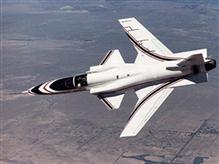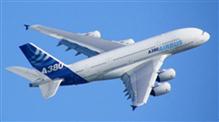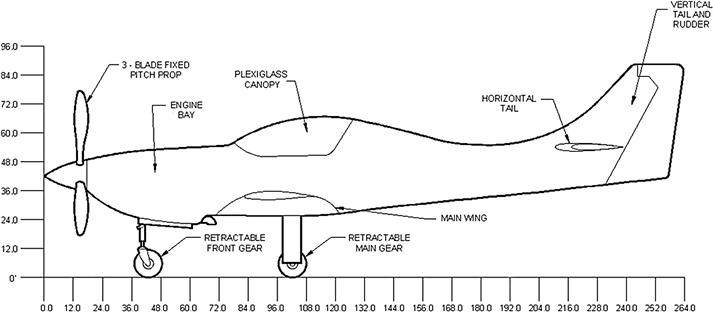Spotlight On: Aerospace Engineering
Aerospace engineering is a highly specialized branch of mechanical engineering that evolved relatively recently in our history, as humankind took to flight, first in the atmosphere then into space. Formally defined, it is the science behind the design and construction of aircraft (aeronautical engineering, Figures 1 and 2) and spacecraft (astronautical engineering). These engineers conceptualize, build, and test everything from gliders to missiles, jet fighters, and space rockets. Many also work in naval design, as many of the principles guiding the flow of air around an aircraft (a fluid) readily transfer to the flow of water (also a fluid) around a ship or submarine.
Aerospace engineers need a mastery of a wide variety of engineering sciences, such as fluid dynamics, structures, control systems, aeroelasticity, thermodynamics, materials, and electrical engineering. It is perhaps one of the more diverse engineering disciplines and specialization is necessary. Three broad areas of specialization include aeronautics, propulsion, and space vehicles.
Education for aerospace engineers starts out similar to that for the other engineering disciplines. In the United States, all engineers typically have to attend a four year ABET-accredited school for their entry level degree, a Bachelor of Science. While there, all students go through a somewhat similar program in their first two years, regardless of future specialization. Classes taken include extensive math, physics, and some chemistry courses, followed by statics, dynamics, mechanics, thermodynamics, fluid dynamics, and material science. In their final two years, engineers specialize by taking courses relevant to their chosen field. For aerospace engineering, this includes aerodynamics, structures, controls, propulsion, and orbital mechanics, among others.
Upon graduation, aerospace engineers can immediately enter the workforce or go on to graduate school. Although not required and not common in the aerospace industry, some engineers choose to pursue a Professional Engineer (P.E.) license. This would typically be in related mechanical engineering, as there is no aerospace P.E. exam. The process first involves passing a Fundamentals of Engineering (F.E.) exam, followed by several years of work experience, and finally the P.E. exam.
Aerospace engineers can generally expect somewhat higher starting salaries than civil, mechanical, and industrial engineering graduates but on par with electrical and lower than petroleum engineering and some computer science degrees. A master’s degree is usually the path to higher starting pay, which with a bachelor’s, averaged around $59,000 nationwide (in 2011) and with a median pay of $97,480 (in 2010) according to the Bureau of Labor Statistics. This, of course, depends highly on locality, market demand, and even GPA on graduation.
So how do aerospace engineers use AutoCAD and what can you expect? Industrywide, AutoCAD use is not widespread due to the nature of the profession, which relies on more sophisticated software to model parts directly in 3D. The industry standard is CATIA, though NX and Pro/Engineer are also used. Aerospace engineering also relies heavily on software for initial testing or design validation. Examples include finite element analysis (FEA) and software such as NASTRAN or ANSYS to model loads, deflections, and heat propagation. Computational fluid dynamics (CFD) and software such as Fluent are used to model the flow of air around the design at various speeds and temperatures (also applicable to the flow of water). See Appendix B if you would like to learn more about these techniques.
AutoCAD, however, can still be found for small part design, aerospace electrical schematics, and overall system layouts. Smaller companies that have little to no modeling, testing, and manufacturing needs also may use AutoCAD due to the associated cost savings. Many home kit airplane designers or builders turned to AutoCAD to produce drawings or just to document ideas. The general trend is to move away from AutoCAD as design requirements become more sophisticated and testing and manufacturing are involved.
AutoCAD layering is far simpler in aerospace engineering than in architecture. There is no AIA standard to follow, only an internal company standard, which may not be as detailed. As always, the layer names should be clear as to what they contain. Figure 3 shows an aerospace application of AutoCAD for a set of wings for a small unmanned aerial vehicle (UAV).

Figure 3 Wings for a small unmanned aerial vehicle drawn with AutoCAD.
(Images courtesy of DynaWerks LLC., www.DynaWerks.com)
Figure 4 shows a typical design of a small general aviation aircraft wing, with overall dimensions and specs.
Finally, Figure 5 shows a side profile of a small private plane (a Lancair Legacy®) drawn in AutoCAD for a student project. This side profile study was used for sizing while learning design; the vertical and horizontal numbers are inch position from the tip of the propeller cone and the ground. Note the use of a thicker polyline in the outline to accentuate the profile.




